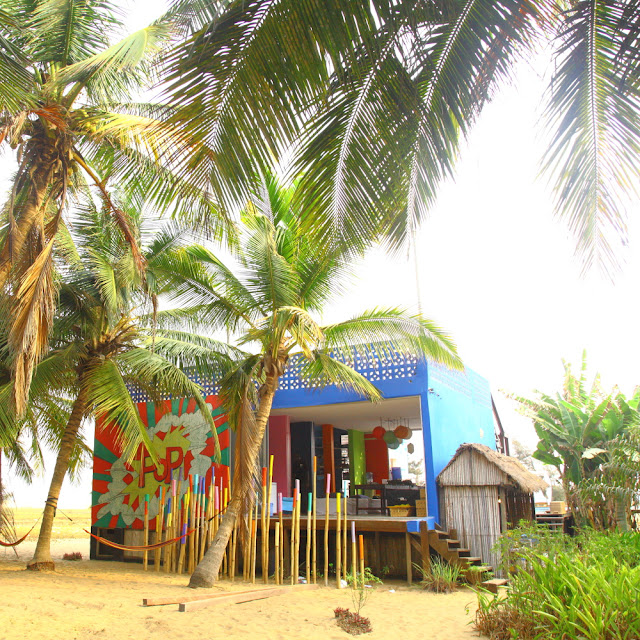 |
| open house |
Pop Beach is like a jewel on the side of the ocean. It is not far from the center of Lagos, it takes 20 minutes away by boat from Victoria Island. A building with two rooms painted in rainbow colors serve as the dining and lounge areas. The eating room is open on both side leaving the breeze cool down the guests and opening on a wooden terrace with a nice rectangle pool and sun-beds with white cloth as screen which float with the air and beyond is the ocean. On top of the building is a roof terrace which can be enjoyed when the sun is not too hot for drinks or yoga. The place is carefully designed for soothing in a tasteful way.
 |
| pop dining |
As we arrived and for a large part of the afternoon Bob Marley was filling the air. The owner and the few guests were spread in different corners, there was space to breathe. The decoration was colorful and tasteful.
The place has two "chalets" design in the same spirit as the main building, except that they have a second floor instead of a roof terrace.



Comments
Post a Comment